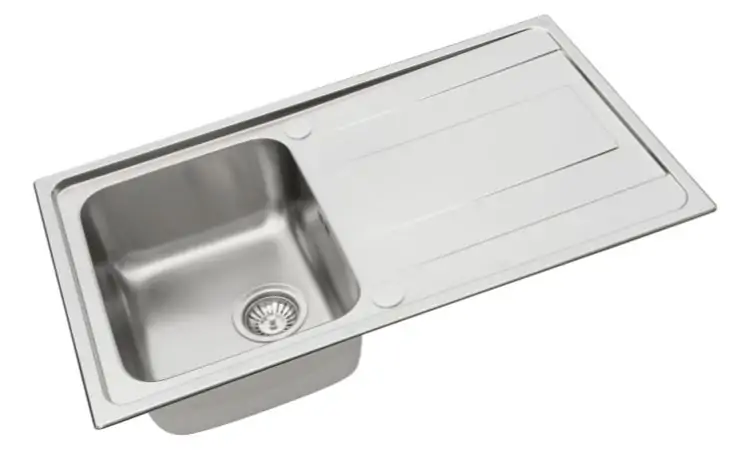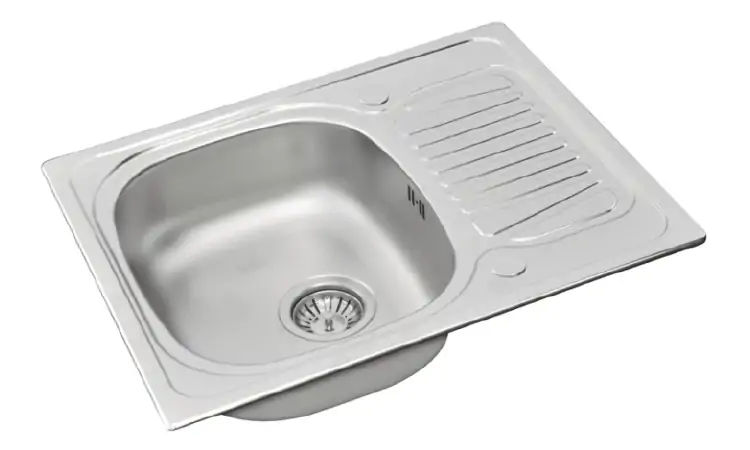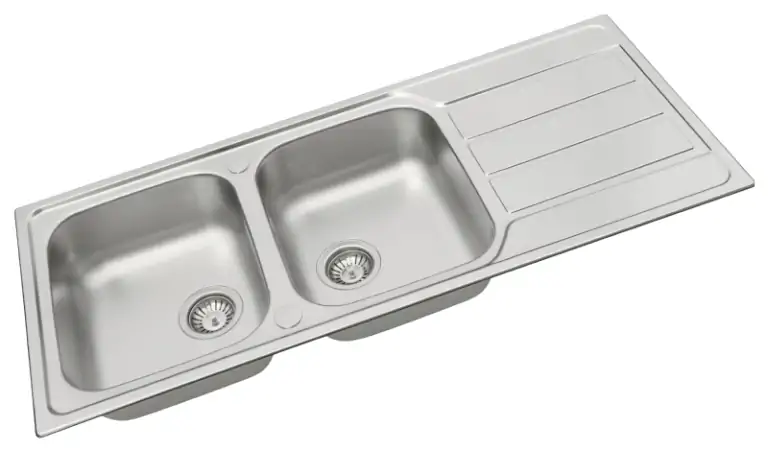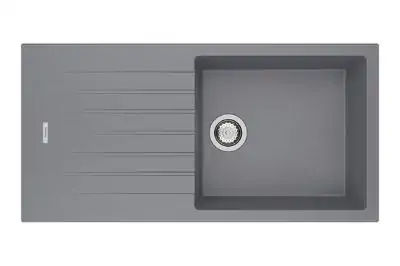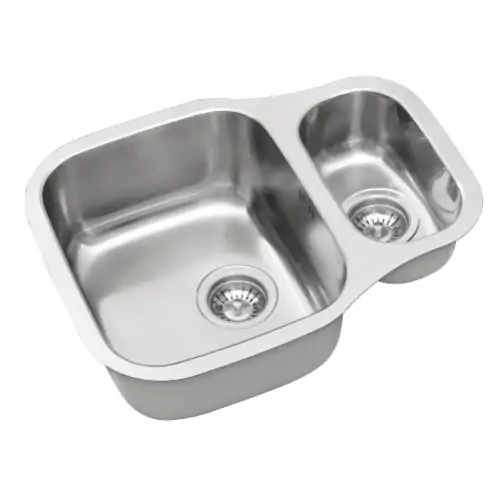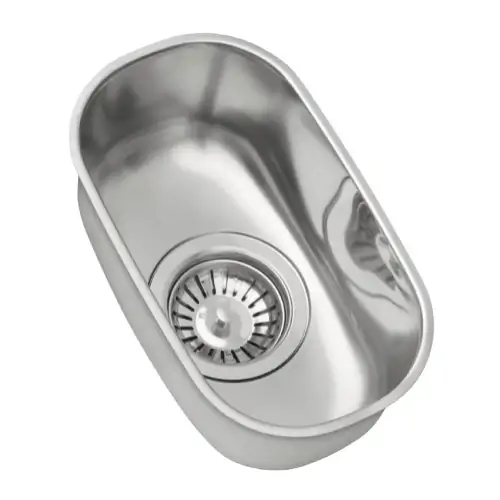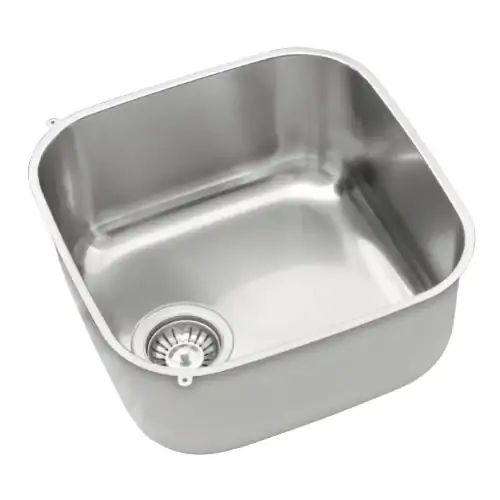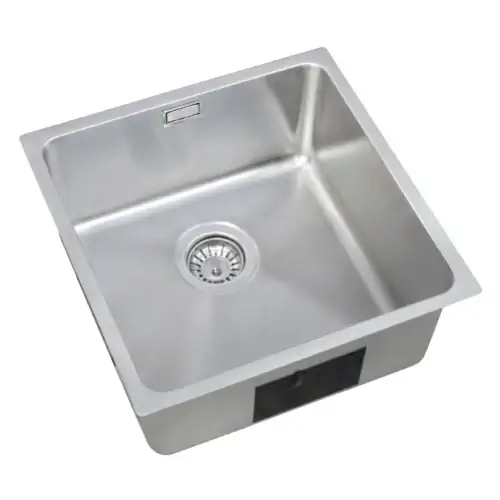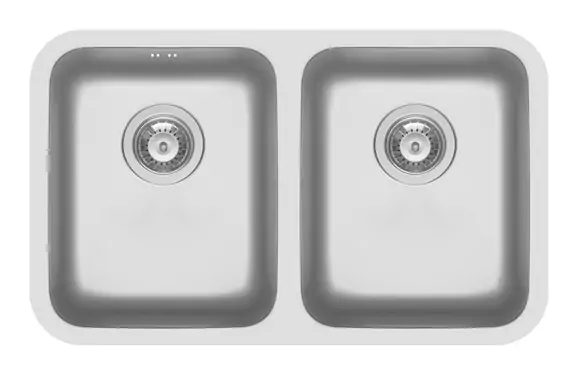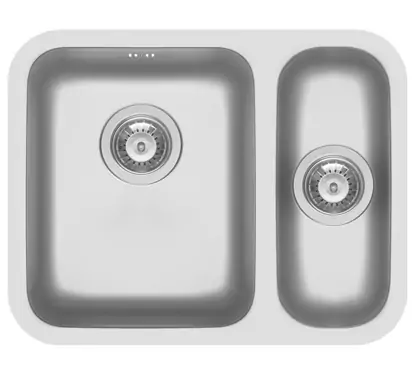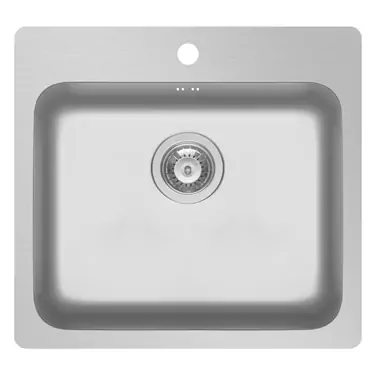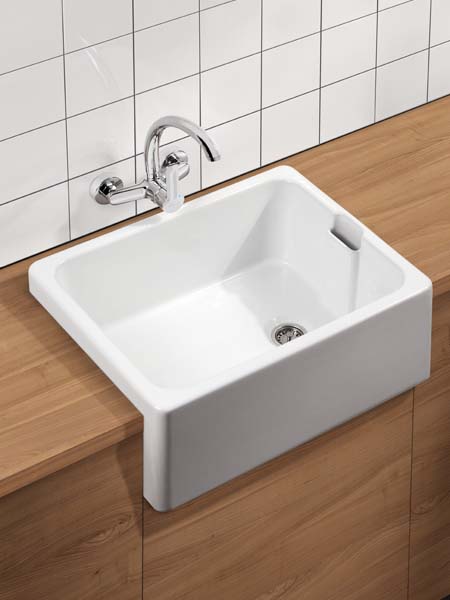Kitchen sink installation: Inset or Undermount sinks
For those of you wanting to replace a sink, we would hate for you to see a sink you like only to find out it does not suit the material of your worktop or is a different installation to an existing cut out. There is a good reason why an extensive range of both installations are out on the British market and it is not all aesthetic. Here are some factors for you to consider:
Inset Sinks
Come again?
Inset sinks are sinks that are installed by being sit on top of the worktop with typically a 5mm lip rising up from the surface. There is an external frame from the bowl and drainer that makes this installation possible. Silicone along the lip is used to keep the frame intact. Most commonly inset sinks are square framed and come with a draining board.
Pros
Bigger range - In terms of price, material, features and size, there is no doubt that you will have a much greater range available in the British kitchen fittings market if you choose inset. For starters, they are the most common sink on the market. You will find great value on a traditional single bowl single drainer. While undermount sinks are typically confined to stainless steel (as the purpose of having a fancier material for all to see would be defeated!), inset are just as popular in ceramic and composite.
This greatly enhances your ability to choose a sink based on the theme of your kitchen. The options of half bowls and draining boards are much more extensive also. If you want a far reaching sink, suppose you are used to cooking for a small army, you are more likely to find an inset sink that has a larger cleaning station such as the single bowl double drainer
More likely to have a draining board - If you do not own a dishwasher or prefer to hand wash pots and pans, you might prefer to have a draining board. Although some undermount sinks have draining boards, one of their main purposes is that water can be wiped into the sink from the worktop counter. Inset sinks have a greater range of half bowls and draining boards to allow for cutlery to dry naturally without damaging the worktop surface.
More durable and suitable to most countertops - While undermounts are generally not recommended for laminate worktops, the most common and more affordable worktop on the market, insets suit perfectly. The lipped frame of the sink protects the cut out edge from moisture and warping of wood, a common danger with laminate worktops. Although inset sinks may not typically look great on granite worktops, some insets such as the black composite sink, greatly enhance the granite theme.
Simpler cut out - You simply need to cut out the square frame of the sink and then use silicone to seal. You do not need to know about radius cut outs which require more work and therefore mean greater is risk of damaging sink and higher labour costs.
Kitchen tap is installed to sink - Another reason why they are easier to install is that the tap is installed to the sink rather than another cut being made in the worktop. All Pyramis inset sinks come with a standard 35mm tap cut out reversible to each side.
Cons
Harder to keep worktop clean - Any water that goes outside the bowl opposite the draining board, lands on the counter surface and does not have a natural route of draining. This leaves a wet surface or worse it spills on to the drawers and floor. Also the silicone sealant can get murky over time which leaves a stain on the worktop.
May not suit granite worktops - If you spend a lot of money on a granite worktop, you will want it to be a starring feature in your kitchen. It is understandable that an inset sink may look out of place, lipping out above a smooth granite surface. Composite sinks are really the only inset sink suited to granite worktops.
Larger the size the more limited you are to changing - As undermount sinks are smaller, you can have a larger choice of replacement in 10-15 years. Once you choose an inset sink, typically you have committed to that installation unless you want to change worktops or find an undermount the same size as the original fitting. Chances are you will not have a large range of options on renewal.
Undermount Sinks
Again, what?
Undermount sinks are sinks installed under the surface of a worktop with a cut out made to the size of the bowl. It is not common for an undermount sink to come with a draining board but rather the idea is that water can be wiped towards the sink. The kitchen tap is installed separately unlike an inset sink and in the case of granite worktops, has a radial cut out to suit the shape of the sink. They are known as a modern kitchen design and are starting to appear more often.
Pros
Modern chic design - If you have invested heavily in a quality granite worktop, that you want to stick out, then an undermount sink greatly facilitates the smooth surface. This design is becoming more and more popular as the years go by and is considered a popular contemporary look. It helps give the kitchen a sophisticated and minimalist look. If you have a bowl and a half undermount, it may look particularly stylish to keep the granite between each bowl.
Easier to keep clean - For cleanliness purposes, an undermount sink will help you keep and maintain a clean kitchen. The sink acts as a natural drain and you can simply wipe water towards the sink and therefore you avoid a build up of water that occurs with inset sinks. This is especially true for the smooth surface of granite worktops where water runs fast.
Deeper bowl - Conscious of the lack of a draining board, generally undermount sinks have a deeper bowl than inset, leaving you plenty of room to put dirty pots and pans. All our medium and large undermount sinks have a bowl depth of 200mm larger than all our inset sinks.
Cons
Generally not recommended for laminate worktops – As laminate is the most common finish found in worktops, due to their cost and still very impressive design, it is unfortunate that undermount sinks would be a risky installation. As laminate worktops are made of wood beneath the finish, if water regularly crosses the edges of the cut out, as they would with an undermount installation, a build up of dampness and moisture would occur leading the wood to warp.
More awkward to install - With an undermount sink, you need to install the tap separately and in the case of a solid granite surface, need to know the radial cut out. This may mean you would require a far reaching kitchen tap such as the Savannah. Separate and additional work compared to installing an inset sink may result in higher labour costs and more risk of your sink/worktop being damaged. That is to say those if you do choose this route, definitely leave it to the pros!
Likely no Draining board - For those of you who are used to a familiar traditional type of sink, the lack of a draining board maybe an issue. If the sink is full, excess dirty cutlery will have to sit on the worktop which may leave more cleaning to do if for example a used wok was put upside down. All in all however, for the average household with a dishwasher, this not really an issue as the sink has sufficient depth to hold pots and pans while any water on the worktop can be wiped into the sink. If you do not have a dishwasher, maybe its best to stay clear of an undermount sink.
Flushmount Sinks
No, you're not seeing double - flushmount and undermount have very subtle differences which make a world of difference. Keep reading to see why...
A flush mount sink is a sink that can be installed with the lip of the sink flush-mounted into the bench-top. This achieves a seamless flow between your bench-top and your sink – with no break or bumps in the design. Given the minimalist design of a flush mounted sink, the skill level and precision of you fitter will be paramount in the installation of a flushmount sink, so as always, be sure to employ a skilled and certified trades-person.
Pros
Aesthetic appeal - The principal advantage of flush-mounting a sink is aesthetic. Traditional sink design, with a top mounted sink with a visible lip that sits above your bench-top, may not match well with a modern kitchen aesthetic. The flushmounted sink allows the sink and counter top to fuse in unison; an integral addition to any minimalist kitchen design motif.
Easier to keep clean - Akin to an undermount sink a flusmount sink will help you keep and maintain a clean kitchen by also acting as a permenant and natural drain avoiding the build up of water that occurs with many inset sinks.
Deeper bowl - Generally, undermount sinks have a deeper bowl than inset – an flushmount sinks are no exception to this. What you may lose in having no drainking board, you will gain in bowl depth leaving you plenty of room to put dirty pots and pans. All of our flushmount sinks have a bowl depth of at least 180mm.
Cons
Skilled fitter needed to install – The installation of a flushmount sink is not a DIY job and requires a skilled and experienced crafts-person to complete correctly. As mentioned above, the skill level and precision of you fitter will be paramount in the installation of a flushmount sink. Given the goal is to achieve unobstructed flow between the worktop and the sink, everything from the original cutout to the fitting of the sink will need to be done perfectly to achieve seamless integration between the sink and its counter top. A wrong counter cutout can lead to a ruined worktop [and the high costs which come with such a blunder] and a poorly mounted sink, can render the core advantage of a flushmounted sink void.
Generally not recommended for laminate worktops - As laminate is the most common finish found in worktops, due to their cost and still very impressive design, it is unfortunate that, just like undermount sinks, flushmount sinks would also be a risky installation. As laminate worktops are made of wood beneath the finish, if water regularly crosses the edges of the cut out, as they would with an flushmoujnt installation, a build up of dampness and moisture would occur leading the wood to warp.
Likely no Draining board - For those of you who are used to a familiar traditional type of sink, the lack of a draining board may be an issue. If the sink is full, excess dirty cutlery will have to sit on the worktop which may leave more cleaning to do. All in all however, for the average household with a dishwasher, this is not really an issue as the sink has sufficient depth to hold pots and pans while any water on the worktop can be wiped into the sink. If you do not have a dishwasher, maybe its best to stay clear of an flushmount sink.
Belfast sinks… an alternative
As mentioned in a previous post, Belfast sinks are without doubt the most popular choice for those wishing to have a traditional or country kitchen theme. There is a growing incline towards them in the British market. With the front of the sink sitting out, it can be installed both under and lipped above the counter. It is an alternative for you to consider.
Hope this article helps you in your search :-)
View our entire range of kitchen sinks and taps


